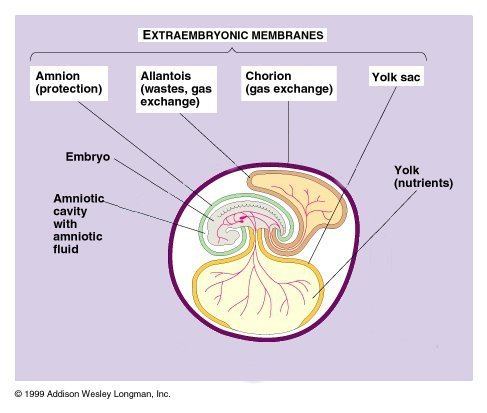Phylum Chordata | ||
 | ||
Superclass IchthyopsidaHuxley, 1863 | ||
The anamniotes are an informal group comprising the fishes and the amphibians, the so-called "lower vertebrates", which lay their eggs in water. They are distinguished from the amniotes, the "higher vertebrates" (reptiles, birds and mammals), which lay their eggs on land or retain the fertilized egg within the mother.
Contents
The name refers to the amnion, an embryonic membrane produced during the fetal development of amniotes which serves to transport oxygen into the egg and expel carbon dioxide. As the name suggests, anamniotes do not develop an amnion during fetal life and are able to exchange oxygen, carbon dioxide and waste metabolites with the surrounding water. The water helps in the diffusion of waste products (particularly ammonia), allowing the embryo to complete embryonic development without being poisoned by their own waste products. During their development, all anamniote classes pass through a stage which resembles fish, thus indicating their close physiological relationship.
Anamniote traits
The group is characterized by retaining the primitive vertebrate condition in several traits:
History of discovery
The features unifying the anamniotes was first noted by Thomas Henry Huxley in 1863, who coined the phrase Ichtioid or Ichthyopsida ("fish-face") for the group. It is a taxonomic classification just below the level of Vertebrata, though Huxley presented the Ichtyopsida as an informal unit and never ventured to forward a Linnaean rank for the group. The term ichthyopsida means fish-face or fish-like as opposed to the sauropsida or lizard-face animals (reptiles and birds) and the mammals. The group representing an evolutionary grade rather than a clade, the term anamniote is now used as an informal way of denoting the physical property of the group, rather than as a systematic unit.
